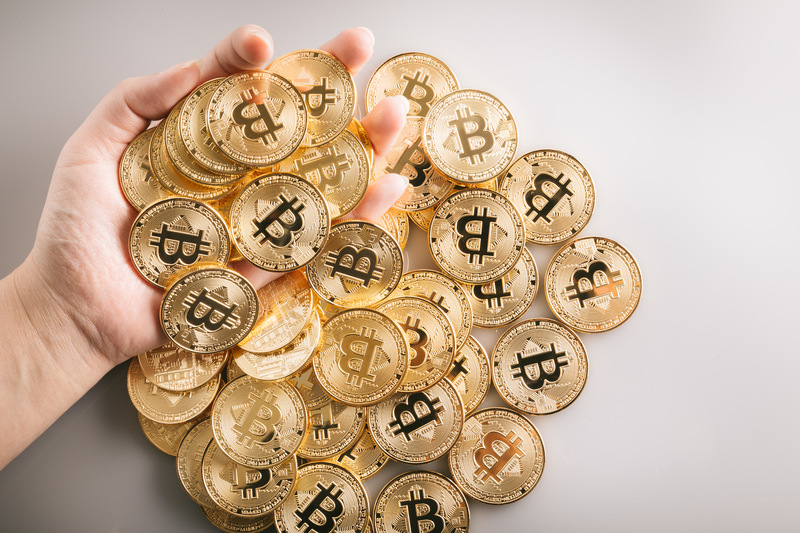What Is A Gold-Backed Cryptocurrency? Top Gold Cryptocurrencies Right Now
What Is A Gold-Backed Cryptocurrency? Top Gold Cryptocurrencies Right Now

Bitcoin trading has grown massively in recent years, with the crypto market sitting as one of the world’s fastest expanding industries. As more investors look to the digital asset market as a hedge against inflation, we’re seeing more companies and platforms adopt crypto and develop in the Web3 and decentralised space.
At the heart of it, Bitcoin is a decentralised cryptocurrency. This means it lacks a central bank and is not governed by any authority. It may be exchanged for products, services, or even other currencies. Bitcoin tokens (BTC) can be traded, used, and also held as an investment asset. Usually, Bitcoin is stored in a crypto wallet, which functions similarly to a personal investing account.
When it comes to trading Bitcoin, one of the primary advantages is that you do not need any prior understanding of finance to get started.
There are two different kinds of trading platforms available for buying and selling cryptocurrencies:
The decision between a broker and an exchange will be heavily influenced by your choices for security, costs, and access to other cryptocurrencies.
When purchasing or selling BTC, you should always use a trusted exchange or broker. This is because using an exchange often requires that you submit personal information such as your name, address, and phone number. If this information enters into the wrong hands, it can be exploited to commit identity theft.
Choosing a broker or exchange might be daunting, especially if you’re new to the market. To make the process as smooth as possible, consider the following factors:
Signing up for a cryptocurrency exchange allows you to purchase and sell Bitcoin, but each exchange’s method is different. Coinbase, for example, provides a relatively basic interface that makes it straightforward to select a trading pair (for example, “BTC/USD”) and place buy and sell orders. Other exchanges’ UI vary, so acquaint yourself before purchasing your first Bitcoin.
After you register for an account, you must integrate your bank account. You may also attach a credit card; however, this may result in reduced daily spending limits and additional fees.
After you’ve connected your bank account, you’ll likely be asked for extra verification. Most exchanges require basic personal data such as your name and address. This verification procedure may take several days or weeks, depending on how quickly the information is given to your exchange. If you wish to increase your daily purchase limitations on a bank account or credit card, you may also need to prove your identification.
Go to the “Buy Bitcoin” page and select a payment option. Enter the amount of Bitcoin tokens you wish to purchase. Look at the specifics of your order and make your final selection.
Every new potential Bitcoin buyer will encounter a swarm of crypto exchanges vying for their business. Choosing the best one is influenced by a variety of criteria, the most essential of which is its location.
Global exchanges come under numerous government authorities, necessitating varying Know Your Customer and Anti-Money Laundering policies based on the relevant areas. This is why, depending on the exchange and your area, you must supply personal information in order to open an account and begin trading on some centralised exchanges.
There are three types of crypto exchanges: centralised exchanges, decentralised exchanges (DEXs), and peer-to-peer exchanges. Centralised cryptocurrency exchanges are online platforms where you may establish an account with your preferred login information. Depending on the exchange and area, you must additionally give specific personal details.
On centralised exchanges, you can send funds to the platform in the form of crypto or money from a bank account and trade with those funds, including buying and selling Bitcoin. Depending on the exchange, you may trade a variety of various crypto asset kinds on a single platform. One disadvantage of this arrangement is that you do not officially retain your funds when they are invested.
DEXs, on the other hand, let you do transactions directly from your wallet. DEXs are essentially groupings of pooled liquidity for various assets on the blockchain where the DEX is housed. DEXs based on Ethereum, for example, permit trading in Ethereum-based assets. Bitcoin cannot be exchanged on an Ethereum-based DEX, although there are workarounds.
Peer-to-peer, or P2P, trading is another alternative for buying and selling Bitcoin. There are various platforms available to facilitate such transactions, including an escrow service to secure both parties and their cash.
You must be connected at all times and keep a close eye on the Bitcoin price. This is a highly volatile market, and you must be able to respond rapidly in order to benefit.
As with any other investment, you must pay close attention to the market value of cryptocurrencies as well as any connected news.
Coinmarketcap and Coingecko are great for tracking the price, volume, circulating supply, and market capitalisation of the majority of current cryptocurrencies.
Many providers may send you an email or text message when particular BTC values are achieved.
Risks should be managed properly across your portfolio. Diversify your holdings and hedge against government fiat currencies. This may be accomplished by exchanging bitcoin for a fiat currency such as USD or EUR while maintaining your bitcoin positions.
For pros or newbies, Bitcoin trading may be incredibly rewarding. The market is fresh, extremely fragmented, and has wide spreads, particularly in 2022. Arbitrage and margin trading are very common. As a result, many people can profit from bitcoin trading.
Bitcoin’s history of bubbles and volatility has most likely attracted new users and investors more than any other characteristic of the cryptocurrency.
What Is A Gold-Backed Cryptocurrency? Top Gold Cryptocurrencies Right Now
What Is Cryptocurrency Adoption?
What Happens If You Don’t Report Cryptocurrency On Taxes?
How To Trade Cryptocurrency And Make Profit